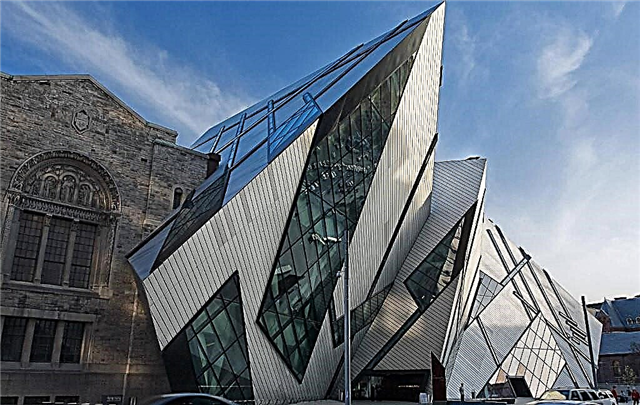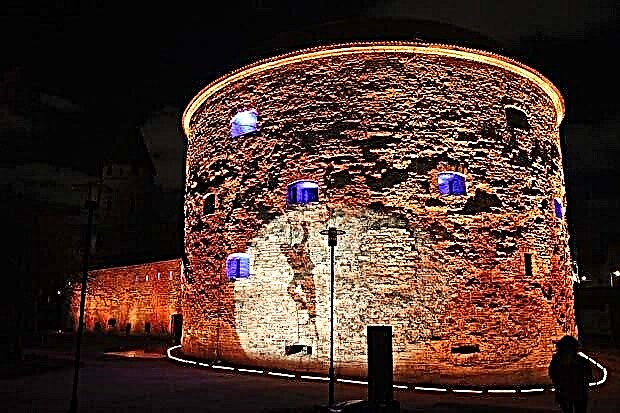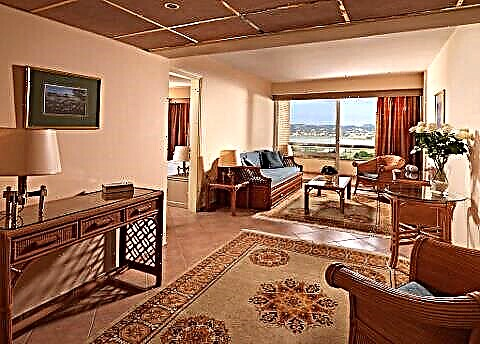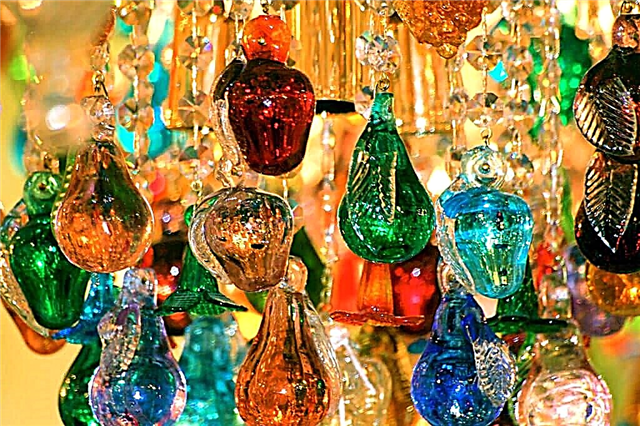Murano Island is an integral part of the Venetian Lagoon. Its area is 1.5 square kilometers, with a population of over 4,000 people. It is a quiet and peaceful place with narrow streets and densely built up colorful houses. The world famous Venetian glass production is located here. Local residents are skilled craftsmen who inherited the secrets of creating glass masterpieces from their ancestors.
Tourists find themselves in the realm of glass-blowing craft. Murano is home to many workshops for the production of unique glass products. In some squares and in the courtyards of the island, fragile compositions and sculptures are installed, demonstrating the main occupation of local residents. Guests of Murano are given a unique opportunity to observe the enchanting process of glass melting, which, after laborious manipulations of the master, turns into a graceful statuette or a patterned vase.
History of the island of Murano in Italy

In the XIII century, extraordinary glass objects were brought to Venice from Constantinople, distinguished by their lightness, subtlety and transparency. For the Venetians, craft was a vital occupation, because the island settlement needed to master the production of goods. Enterprising residents mastered the secret recipe for glass making, which gave rise to the emergence of small glass-blowing workshops. The high temperature of the heated furnaces threatened the wooden buildings of the city with fire. This circumstance forced the government of Venice to issue a decree according to which all glass blowers were to move to the island of Murano.
Murano has its own administration headed by the mayor. The active construction of factories leads to an intensive development of the glass industry. The period of the XIV-XV centuries was marked by the highest flourishing of the industry. The population of Murano has grown to 50,000. About 300 workshops, factories and schools were founded. For the economy of the Venetian Republic, glass production was one of the most profitable enterprises. The treasury vault is constantly replenished with gold through the sale of glasses, mirrors and glasses throughout Europe. Such products were appreciated and presented as items of high demand. Murano Island flourished. The well-being of the people was directly dependent on the glass craft.
Glass blowers were equated in their privileges with the nobility. A high social status allowed artisans to wear a sword, their children were allowed to enter into a marriage alliance with members of the aristocratic families of the republic. The masters had the right to the leniency and mercy of the authorities, and also had immunity from unjustified arrest. There were two indisputable laws - glass blowers were not allowed to leave the Venetian islands, and also to divulge the secret of glass production. For violation of these laws, craftsmen were sentenced to death.

In the 15th-16th centuries, the professionalism of glass blowers reached unsurpassed heights. Murano Island gains worldwide fame as a center for the production of unique glass. Craftsmen improved the technological process to such an extent that they began to produce crystal, gilded and colored glasses. Products have become more diverse and decorated with rich colors. Foreign merchants bought in huge lots of bowls, vases, figurines in the form of animals, birds and flowers.
Murano is becoming a favorite destination for Venetian aristocrats. On the island, they begin to erect luxurious palaces for wealthy people who wished to move away from the noisy and bustling Venice. The villas were decorated with sculptures, fountains and paintings. In the 17th century, the popularity of Murano glass was shaken as a powerful competitor emerged in Bohemia. The demand for local products has dropped markedly. However, chandeliers and mirrors were still a hot commodity throughout Europe.
A significant blow to the island's economy was inflicted by the French during the fall of the Venetian Republic in 1797. Napoleon ordered the destruction of all glass factories. The subsequent occupation by Austria did not promise any hope of restoring production. The Habsburgs preferred to develop and patronize Bohemian glass factories.
In 1854, the craft was revived. It was no longer possible for local craftsmen to achieve their former glory. But a new factory was built for the production of household glass for domestic consumption. A few years later, another workshop for the creation of glass tiles was opened, which was needed for the restoration of Venetian palaces and sanctuaries. The inhabitants of Murano again felt the taste in work, like their ancestors in distant times. After the emergence of a new state - the Kingdom of Italy, the artisan traditions of past eras are reviving on the island of Murano. Workshops resume full production capacity. Gradually, the demand for Murano glass began to increase and does not fade away today.
Attractions of the island - what to see?
In addition to glass shops and workshops, Murano is home to cathedrals, several dilapidated palaces, and a museum. These attractions deserve the attention of tourists.

The Catholic Church of San Pietro Mortire, founded in 1348, has a rather simple appearance compared to other Venetian sanctuaries. The brick basilica is decorated on one side with an extension of arcades, and on the other with stained glass windows. The main entrance is framed by an ornament with two columns on the sides. The inner hall of the cathedral amazes visitors with its rich interior. The graceful Murano glass chandeliers are in perfect harmony with the old art frescoes and religious sculptures. The room is divided by rows of high colonnades. There are amazing panels on the walls. Of particular interest are the works of the Venetian artist G. Bellini "The Dormition of the Most Holy Theotokos" and "Theotokos with the Child".

The second shrine of the island of Murano is the Cathedral of Santa Maria e Donato. The main facade of the basilica looks like a polygonal cylinder with refined arches. The inner hall is bordered by an openwork colonnade. The floor, walls and ceiling are decorated with mosaic panels depicting floral designs and mythological animals.
There are many beautiful houses along the canal of the island. Among them, the oldest architectural structure, the Palazzo di Mula, stands out. The red-brick palace in the Gothic style was erected in the 12th century and has retained its appearance to this day. The facade of the building is decorated with lancet windows and marble ornamental elements. The castle has its own pier.
Inquisitive visitors to Murano Island can visit the Glass Art Museum. Here are presented unique exhibits recovered during archaeological excavations from around the world. Here you can see the collection of the museum, revealing the history of the development of glass art from different eras.
Venetian glass island

In Murano, masters of Venetian glass, which is considered the most delightful in the world, are successfully working. This is not easy work. The main feature of the production process is manual work, as bequeathed by the ancestors.
The craft of Murano glassmakers is still relevant today. Amazing colorful products can be used as traditional household items, as well as to imitate precious stones. In the manufacture of Murano glass, craftsmen use original technologies: copper crumbs, thin colored threads or metal oxides are added to the glass mass.As a result, glass products acquire intricate patterns and interesting shapes. Luxurious glass jewelry surprises with its variety. Glassblowers create exquisite earrings, rings, bracelets, animal figurines, vases, glasses and even watches.
On the island of Murano, next to each workshop there are various shops: simple shops and high-end boutiques. Each tourist can purchase delightful examples of glass art to their liking.
How to get to Murano Island?
Local water buses - vaporetto - run from Venice to Murano. The distance between points is no more than 2 km. River minibuses dock at the island's lighthouse or at the stop called Collona, where tourists are greeted by a glass composition - a woman in a cube looking at pigeons.











